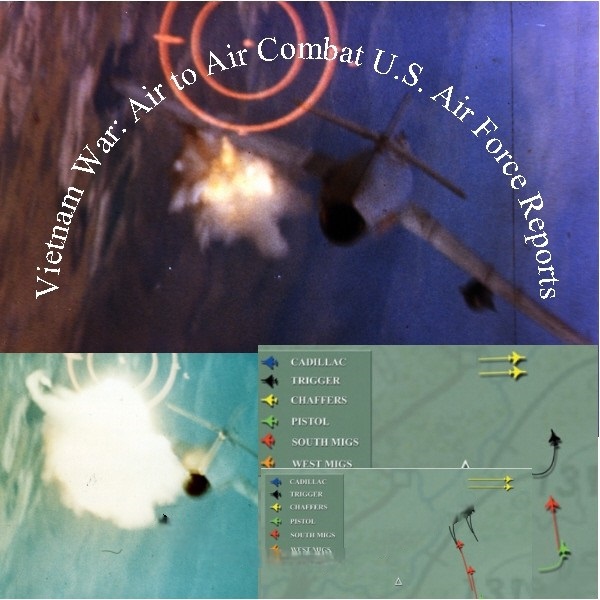
Description
Vietnam Air Combat: Timeline and Key Figures
Detailed Timeline of Main Events (1965-1973)
Early Stages & Growing Threat (1965-1966):
- January 1965 – March 1967: Project RED BARON initiated by the Weapons Systems Evaluation Group (WSEG) to study air-to-air encounters in Southeast Asia. This period becomes the focus of the first two volumes of their report, analyzing F-4, F-8, F-105, RF-4C, RF-8, RF-101, A-1, and A-4 encounters.
- April 1965 – December 1972: Period covered by a Soviet Union GRU study analyzing US air-to-air combat in North Vietnam.
- June 1965 – February 1966: CIA memos sent to the Johnson White House highlight the increasing air-to-air missile capabilities of North Vietnam.
- 1965-1966: The United States Air Force operates under significant restraints during the early “Rolling Thunder” campaign, achieving limited effectiveness in the air war over North Vietnam. This period is later described as the USAF’s “nadir.” Enemy MiGs focus on vulnerable F-105 bombing formations and engage only when they have a clear advantage.
- Late 1966: USAF is prohibited from bombing North Vietnamese airfields, limiting their ability to neutralize enemy fighters on the ground. The only option is to engage and destroy them in the air.
Increased MiG Activity and Countermeasures (January – December 1967):
- January 1 – June 30, 1967: Project CHECO report covers air-to-air encounters over North Vietnam. This period sees a significant increase in North Vietnamese offensive and defensive MiG activity. The intensity of air battles is described as unmatched in the previous two years of USAF airstrikes.
- January 2, 1967: Operation Bolo: Led by Col. Robin Olds, the 8th Tactical Fighter Wing executes a deception tactic, mimicking an F-105 bombing formation with F-4 Phantoms. This lures North Vietnamese MiG-21s into a trap.
- January 2, 1967: During a 12-minute engagement, seven North Vietnamese MiG-21s (approximately half of their operational force) are shot down by USAF F-4s with no US losses.
- January 6, 1967 (approximate): Another deceptive tactic, this time mimicking an F-4 reconnaissance flight, results in the shootdown of two more MiG-21s. These losses significantly reduce MiG activity for several months.
- March 1, 1967: Cut-off date for data included in the first two volumes of the WSEG’s Project RED BARON reports.
- March 1 – June 1, 1967: Period covered by the third volume of the WSEG’s Project RED BARON report, analyzing all air-to-air encounters.
- July 1 – September 1967: First period covered in the second CHECO report analyzing air-to-air activity.
- October – December 1967: Second period covered in the second CHECO report analyzing air-to-air activity.
- October 1967: Publication of the first volume of the WSEG’s Project RED BARON report, focusing on F-4 and F-8 encounters.
Continued Air War and Shifting Dynamics (1968 – 1973):
- January – May 1968: Third period covered in the second CHECO report analyzing air-to-air activity.
- April – December 1968: Fourth period covered in the second CHECO report analyzing air-to-air activity.
- September 1968: Publication of the second volume of the WSEG’s Project RED BARON report, focusing on F-105 and other aircraft encounters.
- February 1969: Publication of the third volume of the WSEG’s Project RED BARON report, covering events from March to June 1967 and miscellaneous events.
- November 1, 1968: Bombing halt over North Vietnam, impacting the nature of air-to-air engagements. The second CHECO report analyzes the relative strengths of US airpower and North Vietnamese air defenses in the months following this halt.
- July 29, 1972: Air Force F-4s engage North Vietnamese MiG-21s northeast of Hanoi. USAF pilots shoot down two MiGs, but one F-4, callsign Trigger 4, is also shot down.
- 2001: Publication of “The Shootdown of Trigger 4” report, investigating whether the loss of Trigger 4 was due to friendly fire.
- 1966-1973: Period covered by Wayne Thompson’s “To Hanoi and Back,” which details the more effective use of USAF air power due to improved doctrine, tactics, technology, and training.
- 1965-1973: Period covered by “Aces and Aerial Victories,” a collection of firsthand accounts from USAF fighter crews.
- 1976: Publication of “Aces and Aerial Victories, 1965-1973.”
- 1977: Creation of the Soviet Union GRU seven-volume study on “US Aggression in Southeast Asia,” including analysis of air-to-air combat incidents. An English summary translation is later made available.
- 2000: Publication of Wayne Thompson’s “To Hanoi and Back: The United States Air Force and North Vietnam, 1966-1973.”
- 2006: Declassification of some reports included in the “Vietnam War Air to Air Combat U.S. Air Force Reports” collection.
Cast of Characters and Brief Bios:
- Robin Olds: A Colonel (later Brigadier General) in the United States Air Force. Commander of the 8th Tactical Fighter Wing. Known for his aggressive leadership and innovative tactics, most notably the planning and execution of Operation Bolo, which significantly crippled the North Vietnamese MiG-21 force. He became a celebrated fighter ace.
- John “J.B.” Stone: A Captain in the United States Air Force and the tactics officer of the 8th Tactical Fighter Wing under the command of Robin Olds. He played a crucial role in devising the plan for Operation Bolo.
- Jacob Van Staaveren: An Air Force historian who served in Korea during the Korean War and began writing about the Vietnam War while it was still ongoing. He authored “Gradual Failure the Air War over North Vietnam 1965–1966,” which critically examines the early years of the air war.
- Wayne Thompson: An Air Force historian who authored “To Hanoi and Back the United States Air Force and North Vietnam 1966–1973,” which provides a more positive account of the later years of the air war, highlighting improvements in USAF effectiveness.
- Pilots from 555th Tactical Fighter Squadron: Three unnamed pilots who were interviewed regarding their experiences and the role of the F-4D Phantom II in air-to-air encounters during the Vietnam War. Their insights contributed to understanding the operational aspects of fighter combat.
- USAF Fighter Crews (mentioned in “Aces and Aerial Victories”): A collective group of United States Air Force pilots and aircrew who flew combat missions over North Vietnam between 1965 and 1973. The monograph features their firsthand accounts of air battles with MiG fighters, survival tactics, and combat experiences.
- Aircrews of Trigger 4: The pilot and weapon systems officer (WSO) of the F-4 Phantom II with the callsign Trigger 4, which was shot down during an engagement on July 29, 1972. The identity of these individuals is not explicitly detailed in the provided source, but their experience is central to the “Shootdown of Trigger 4” report.
Vietnam War Air to Air Combat U.S. Air Force Reports
Vietnam War: Air-to-Air Combat U.S. Air Force Reports
3,405 pages of United State Air Force reports regarding air-to-air combat during the Vietnam War.
Some reports in this collection were not declassified until 2006.
This collection contains:
Project RED BARON Reports
Three reports created by the Weapons Systems Evaluation Group (WSEG). At the request of the Director of Defense Research and Engineering, the Weapons Systems Evaluation Group conducted a study of air-to-air encounters in Southeast Asia. The project’s code name was RED BARON. It collected, analyzed, assembled, and presented data on air-to-air encounters.
The purpose of the project was to make available data that could assist research and development programs for future high-performance fighter aircraft. A secondary purpose of the study was to provide data for use by the military services and scientific community.
For purposes of this study, encounters that were investigated were defined to include the following types: Sighting of enemy aircraft (either visually or by radar); Either U.S. or enemy aircraft initiating hostile or evasive maneuvers; Either U.S. or enemy aircraft expending ordnance; Loss or damage in combat of either U.S. or enemy aircraft.
Essential elements of these reports are the accounts of encounters based on both official reporting media and personal interviews of participants. In Project RED BARON, interviews were considered the primary data source, supplemented, where available, by official reports.
The summation of encounters data sections include: primary mission and tactical situation, mission route, aircraft configurations, flight conditions prior to encounter, initial detection, action initiated, situation development, ordnance, equipment problems, aircrew comments, data sources, narrative description, event summary charts, illustration of events.
The next to last section, was an edited narrative, which integrates all the information sources pertaining to the designated air-to-air engagement. Whenever an air-to-air engagement proved to be of sufficient complexity that a perspective drawing aided in its understanding, such a representation was developed and placed after the narrative in the report.
The three WSEG reports included in this collection are:
“WSEG Report Air-to-Air Encounters in Southeast Asia – Volume 1 Account of F-4 and F-8 Events Prior to 1 March 1967” – An October 1967, 1,305 page report compiling available data on F-4 and F-8 air-to-air encounters between January 1965 and 1 March 1967.
“WSEG Report Air-to-Air Encounters in Southeast Asia – Volume 2 F-105 Events Prior to 1 March 1967” – A September 1968, 372 page compilation of available data on F-105, RF-4C, RF-8, RF-101, A-1, and A-4 encounters between January 1965 and 1 March 1967.
“WSEG Report Air-to-Air Encounters in Southeast Asia – Volume 3 Events from 1 March 1967 to 1 August 1967 and Miscellaneous Events” – A February 1969, 406 page compilation of available data on all air-to-air encounters between 1 March 1967 and 1 June 1967.
Also included in this collection are:
Project CHECO Southeast Asia Report. Air-to-Air Encounters Over North Vietnam, 1 January – 30 June 1967
This report discusses the development of fighter tactics by both US and North Vietnamese Air Forces and significant lessons learned during this period in which North Vietnamese offensive and defensive MiG activity increased. Air-to-air engagements over North Vietnam (NVN) during the first six months of 1967 were marked by an intensity of battle unmatched in the entire two previous years of USAF airstrikes in the north. In this one six-month period, USAF pilots downed 46 MiG aircraft, which represents 75 percent of the total kills up to June 1976. As evidence of the increased use of MiG-17 and MiG-21 aircraft, five more USAF planes were downed bringing the total USAF air-to-air losses to 12.
Project CHECO Southeast Asia Report. Air-to-Air Encounters over North Vietnam, 1 July 1967 – 31 December 1968
Summaries of operations for July-September 1967, October-December 1967, January-May 1968, and April-December 1968. This report describes and analyzes four periods of air-to-air activity before the bombing halt of 1 November 1968. It also depicts the relative strengths of United States airpower and North Vietnamese air defenses in the months which followed their struggle for air supremacy. Charts reflect the relative strengths of US air power and North Vietnamese air defenses for these periods. This publication reviews briefly events before 1 July 1967, as it is a continuation of CHECO report, “Air-to-Air Encounters over North Vietnam, 1 January – 30 June 1967.”
History of Operations Bolo
This report covers the planning execution and results of “Operation Bolo.”
Led by Col. Robin Olds, OPERATION BOLO used a deception tactic that destroyed half of the North Vietnamese MiG-21 fighter force, with no USAF losses.
In late 1966, the USAF was not permitted to bomb North Vietnamese airfields and could only destroy enemy fighters in the air. Complicating the problem, enemy MiGs focused on bomb-laden F-105s and only initiated combat when they had a clear advantage. Col. Robin Olds, 8th Tactical Fighter Wing (TFW) commander, and the wing’s tactics officer, Capt. John “J.B.” Stone, devised a masterful plan to lure and trap North Vietnamese MiG-21s by mimicking an F-105 bombing formation.
On Jan. 2, 1967, 8th TFW F-4s entered North Vietnam from the west using the same route, altitude, and formation as an F-105 bomb strike. They also carried and operated electronic jamming pods used by F-105s. The North Vietnamese took the bait, and the MiGs came up to intercept what they thought was an F-105 strike. At the same time, 366th TFW F-4s came into North Vietnam from the east to block the MiGs’ escape to China and to orbit their bases, preventing the MiGs from landing.
During the 12-minute engagement, seven North Vietnamese MiG-21s, about half of their operational force, were shot down with no USAF losses. Four days later, another ruse, this time mimicking an F-4 reconnaissance flight, shot down two more MiG-21s. These crippling losses greatly reduced MiG activity for several months.
CIA Memorandums
23 pages of CIA memos, dating from June 1965 to February 1966, sent to the Johnson White House marking the development of air-to-air missile capabilities of the Communist Northern Vietnamese.
Aces and Aerial Victories, 1965-1973
A 1976 monograph produced by the Albert F. Simpson Historical Research Center Air University and the Office of Air Force History.
Aces and Aerial Victories is a collection of firsthand accounts by Air Force fighter crews who flew combat missions over North Vietnam between 1965 and 1973. They recall their air battles with MIG fighters, the difficult and dangerous tactical maneuvers they had to perform to survive, and their victories and defeats. The narratives are taken directly from aircrew after-action reports.
Soviet Union Study – US Aggression in Southeast Asia the Final Stage of the War (English Translation)
An English summary translation of a GRU Seven Volume Study “US Aggression in Southeast Asia: The Final Stage of the War. Several Examples and Conclusions,” created by the Soviet Union in 1977. It contains a series of brief descriptions of particular incidents, almost all involving air-to-air combat, in the US air war against North Vietnam, from April 1965 to December 1972.
The Shootdown of Trigger 4 – Report of the Project Trigger Study Team
A 2001 United States Air Force report on whether the reporting of a shootdown of an USAF F-4 in 1972 was accurate. On July 29, 1972 Air Force F-4s and North Vietnamese MiG-21s engaged fifty miles northeast of Hanoi. The F-4s shot down two MiGs, and the MiGs shot down an F-4 whose callsign was Trigger 4 (the fourth F-4 in a flight of four). This report examines whether the shootdown of the F-4 was actually caused by friendly fire.
Report on an Interview with Pilots from 555th Tactical Fighter Squadron re: F-4D in air-to-air encounters
A summary of a two hour interview with three pilots who discussed the role of the F-4D in air-to-air encounters.
Gradual Failure the Air War over North Vietnam 1965–1966
A 388 page book published by the Air Force History Office. From the forward written by Richard P. Hallion, Air Force Historian:
“The United States Air Force reached its nadir during the opening two years of the Rolling Thunder air campaign in North Vietnam. Never had the Air Force operated with so many restraints and to so little effect. These pages are painful but necessary reading for all who care about the nation’s military power.
Jacob Van Staaveren wrote this book in the 1970s near the end of his distinguished government service, which began during the occupation of Japan: the University of Washington Press published his book on that experience in 1995. He was an Air Force historian in Korea during the Korean War, and he began to write about the Vietnam War while it was still being fought. His volume on the air war in Laos was declassified and published in 1993. Now this volume on the air war in North Vietnam has also been declassified and is being published for the first time. Although he retired to McMinnville, Oregon, a number of years ago, we asked him to review the manuscript and make any changes that seemed warranted. For the most part, this is the book he wrote soon after the war.
Readers of this volume will also want to read the sequel, Wayne Thompson’s To Hanoi and Back: The U. S. Air Force and North Vietnam, 1966-1973, which tells the more encouraging story of how the Air Force employed airpower to far greater effect using a combination of better doctrine, tactics, technology, and training.”
To Hanoi and Back the United States Air Force and North Vietnam
1966–1973
A 430 page book published in 2000 by the Air Force History Office, about the later of achievements of USAF air power delivered to North Vietnam.
United States Air Force Fact Sheets
10 pages of text and 28 photographs taken from USAF facts sheets: “Countering MiGs: Air-To-Air Combat over North Vietnam,” “USAF Southeast Asia War Aces,” “Brig. Gen. Robin Olds: Combat Leader and Fighter Ace,” and “Operation Bolo.”














Related products
-
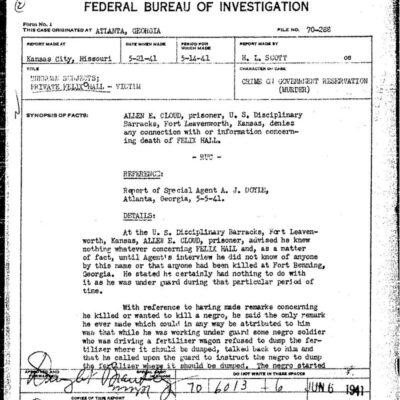

World War II: Felix Hall Lynching – FBI Files, Articles, Historical Records
$9.99 Add to Cart -
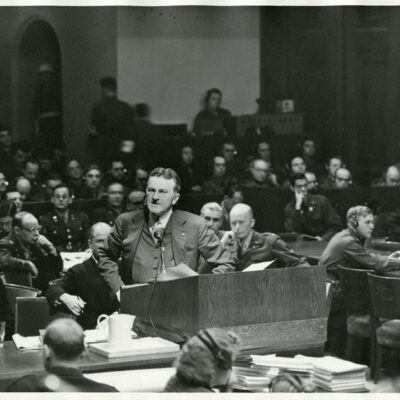
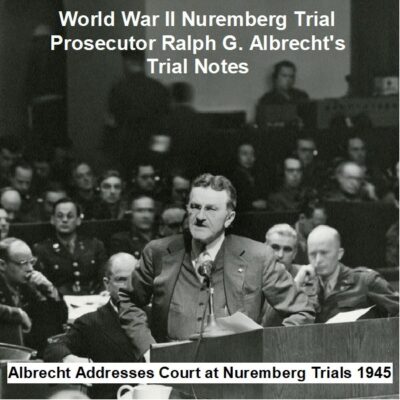
Trial Notes of Ralph G. Albrecht, Prosecutor at the Nuremberg Trials of World War II
$3.94 Add to Cart -
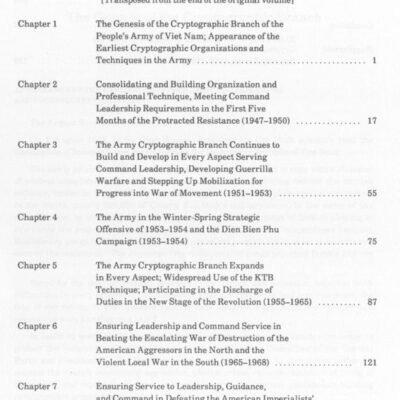
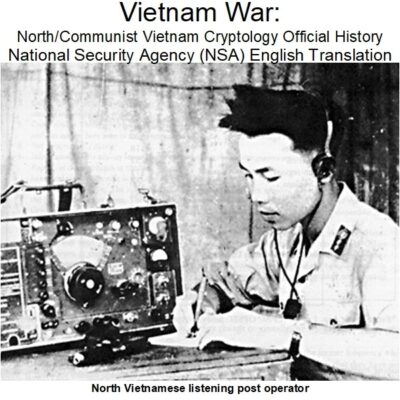
Vietnam War: Cryptology in North Vietnam – NSA Official History
$4.90 Add to Cart -
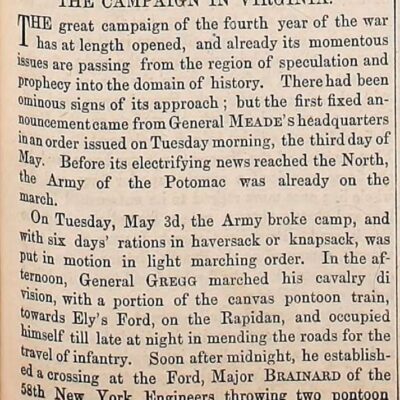
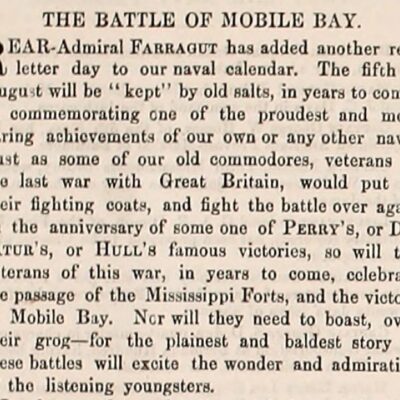
Civil War: Army Navy Journal & Gazette Volume 1 (1863 – 1864)
$19.50 Add to Cart